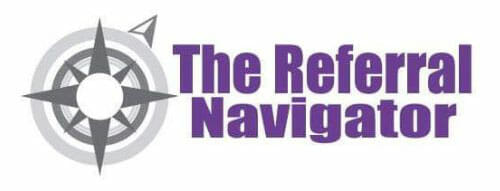In the dynamic world of business, the absence of a well-structured, written business development plan can significantly hinder a firm’s growth potential. Acknowledging and harnessing the power of such a plan becomes instrumental in navigating competitive dynamics. For this article we will focus on business development as relationship-based, referral-based opportunities to generate new prospective clients from introductions made from existing relationships.
Collaboration with a Business Development Consultant
Working with a business development consultant is akin to embarking on a transformative journey. Their insights, drawn from years of experience and expertise, often shed light on blind spots or untapped potential within a business. Their guidance can lead to pivotal changes. Their advice can result in notable improvements.
The relationship formed during consultations facilitates a dialogue where their knowledge enhances your business’s unique dynamics, resulting in strategies tailor-made for success. A business development consultant can ask the questions you need to make decisions you were delaying and focus your energy on the highest ROI from your limited time. The ideal client for a business development consultant is someone who hires a consultant because they are so busy that they barely have time to meet with the consultant. The prospective clients who would say they are too busy to meet with a consultant and will work with a consultant when they are less busy, will probably never work with a consultant.
Importance of a Written Business Development Plan
A written business development plan isn’t just a document; it’s a roadmap meticulously charting the course of action for your business. It serves as a compass, aligning your business’s strengths, weaknesses, opportunities and threats.
After the foundation of strengths and resources in place already is established, the written plan can then go on to address the goals and aspirations of the firm, the mistakes and roadblocks holding them back, the action plan to change behavior, and, finally, the way the members of the team want to be trained, taught, held accountable and led.
Compare the scenarios of having a detailed plan versus the ambiguity of operating without one. Highlight the stark contrast in navigating obstacles with clear, predefined strategies versus resorting to reactive, ad-hoc measures. Emphasize how a well-documented plan not only brings coherence to strategies but also fosters adaptability in dynamic business environments.
Thoughts about business development in someone’s mind are like Bingo balls spinning in a cage; hard to see and understand. Putting those ideas and thoughts in a written plan stops the cage from spinning and leads to clarity and, most importantly, action toward results.
1. Start with Strengths.
A good business development plan will start with the past and present strengths that currently exist. This creates a solid foundation. The process of writing the strengths section of the plan will almost always uncover opportunities to improve. A good consultant will ask a lot of questions and the answers can form most of the strengths section of the plan.
What is the firm doing well to generate referrals from clients and professionals? What tools, systems and tactics are already in place? What tools are being used to keep track of the past clients, current clients, prospective clients and professional referral sources? How are they currently ranked and prioritized? What information is being gathered about those people? What systematic way to follow up with those people is in place to avoid letting someone slip through the cracks? What language is being used to ask questions? What referral stories of success are being told? What type of role-playing and rehearsals are being performed to prepare people for effective business development conversations? Who are the people on the team and what do they contribute to business development? What training has already taken place? What results have already been achieved?
2. Goals for the Business
Instead of a wish list or dream, a written business development plan should clarify specific, measurable goals that are aligned with the core values of the team. The goals should be realistic with time frames for each milestone spelled out. Short term and long term visions should be clear. The goals should include a plan to assess progress, a paradigm for accountability, and a gut check at the time of writing the goals; “Am I willing to pay the price to make these goals a reality?” If we have all of these criteria followed, we are more likely to have an actionable plan to achieve these goals rather than just a wish list.
3. Mistakes and Roadblocks
The written plan should uncover and explain the problems, roadblocks, mistakes, errors and concerns that team members can identify. These might include emotional barriers such as sadness, anger, fear, disgust, or regret. They may include logistical challenges such as limited resources including time and money. If the plan does not address the mistakes made by people on the team, the plan will probably not do anything to prevent them from occurring again.
Although tempting to make a long list of outside roadblocks, it is typically better to focus a large part of this section of the document to mistakes made by people on the team that should not have been made given the information available and situation at the time. A mistake that says “I made this mistake but I was missing information to know it was a mistake at the time,” is probably avoiding the accountability needed to own up to a real mistake.
In team meetings to uncover mistakes it is almost always better to ask each person to share what they did wrong. A leader showing the way and leading by example will share the mistakes they made before asking team members to share their own mistakes.
4. Articulate the Action Plan.
The document, after clarifying the strengths, goals, and mistakes, can now address the plan of action that needs to be taken. The action plan should address how to use the strengths in place, how to reach the goals established and how to avoid or mitigate the mistakes that were made. The key element of this section is that there will be change. It can include the answer to many of the following questions and more.
Who will generate referrals from clients and professionals? What tools, systems and tactics will be added? How will the firm use tools to keep track of the past clients, current clients, prospective clients and professional referral sources? How will the firm rank and prioritize those contacts? What information will be gathered about those people? What systematic way to follow up with those people will be put in place to avoid letting someone slip through the cracks? What language will be used to ask questions? What referral stories of success will be written? Who will tell them? How often will they be told? What type of role-playing and rehearsals will be performed to prepare people for effective business development conversations? How will each person on the team contribute to business development? What training will take place? How will the firm assess progress along the way and adjust the plan going forward?
5. Help Wanted By Each Team Member
Each team member can articulate what they want help with and how they want to be helped. Some may be more appreciative, receptive and successful with different levels of accountability, training, coaching, feedback, advice, and organizational guidance. Ideally, members of the team will opt in for the kind of help that they want, and therefore, be more receptive to implementing the help they get. This part of the written business development plan is also key for the leader or outside consultant engaged to help the team improve its business development results.






